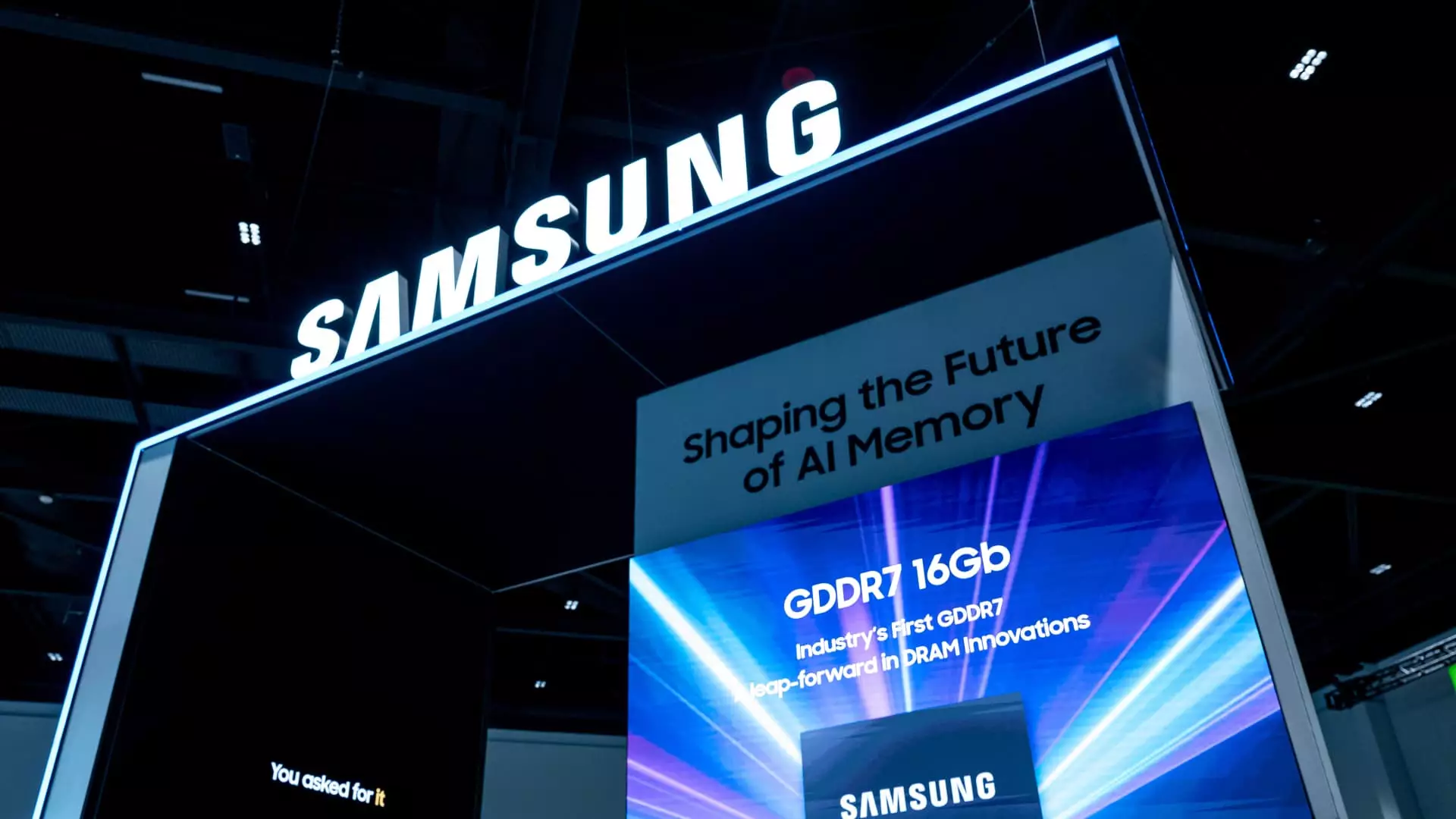Samsung Electronics, a global titan in smartphones and memory chips, is facing an increasingly tumultuous landscape that threatens to erode its market dominance. Recent forecasts suggest a staggering 56% drop in operating profits for the second quarter, signaling not just a temporary setback but a deeper structural challenge. The company projects an operating profit of approximately 4.6 trillion won, a dramatic decline from last year’s figures and well below analyst expectations. This downturn underscores a pivotal moment—Samsung’s traditional, diversified approach is under threat as it struggles to secure its footing in the burgeoning field of artificial intelligence (AI) chips.
The core issues driving this decline are multifaceted. Inventory adjustments, regulatory restrictions, and fierce competition are squeezing margins across key divisions. Notably, the company cited U.S. sanctions impacting exports of advanced AI chips to China, illustrating how geopolitical tensions are now an unavoidable force shaping corporate strategies. Meanwhile, rivals like SK Hynix and Micron are gaining ground with advanced High Bandwidth Memory (HBM) chips—crucial components in AI processors—amplifying Samsung’s challenges in maintaining market share.
Failing to Keep Pace in the AI Era
At the heart of Samsung’s struggles lies its faltering position in the high-stakes AI chip industry. Nvidia’s leadership in this sector has become increasingly evident, commanding roughly 70% of global HBM demand. Despite Samsung’s efforts to catch up, delays in qualifying their latest HBM products with Nvidia have hampered progress. Local reports suggest certification delays extend into at least September, leaving Samsung trailing behind in the race to supply cutting-edge AI hardware.
This delay is more than a minor hiccup; it represents a significant missed opportunity in a market projected to explode in growth. Nvidia’s dominance has created a de facto standard, and Samsung’s inability to get its products certified in a timely fashion further cements its lag in this critical technology. While Samsung has secured some supply agreements with AMD, the limited volume and timing exclude any meaningful contribution to the current quarter’s financials. As a result, the company’s prospects for a quick recovery seem bleak, especially when Nvidia’s market grip remains unchallenged.
Strategic Weaknesses and Structural Challenges
It is tempting to view Samsung’s current predicament solely as a technological gap, but the issue extends into strategic missteps and operational vulnerabilities. The company’s foundry division, which produces chips for various clients, has reported ongoing losses amid weak orders. This segment’s underperformance is particularly troubling, given its potential to serve as a foundation for future growth.
Furthermore, Samsung is facing stiff competition from TSMC, a Taiwanese semiconductor powerhouse that has successfully carved out a dominant position in manufacturing advanced chips for the industry’s leading players. TSMC’s ability to capture high-value clients and ramp up capacity has left Samsung fighting for scraps, further eroding its profitability and strategic momentum.
Leadership’s decision to cut staff by 30% across various subsidiaries hints at internal struggles to streamline operations amidst declining demand. While cost-cutting may provide short-term relief, long-term recovery requires a clear vision and swift technological advancements—something that appears elusive at present.
Implications for the Broader Industry and Samsung’s Future
Samsung’s struggles are emblematic of the broader upheaval within the semiconductor industry. The sector is increasingly driven by innovation in AI and high-performance computing, areas where Samsung’s historical strengths are being challenged by faster, more agile competitors. The company’s recent earnings forecast suggests it is playing catch-up, hoping to close the gap through incremental improvements rather than groundbreaking innovation.
Despite these setbacks, Samsung’s stock has experienced substantial growth over the year, soaring over 16%. This disconnect between the market’s optimism and the company’s faltering core business highlights a paradox. Investors may believe in Samsung’s long-term resilience, but the reality on the ground indicates the need for bold strategic pivots and accelerated R&D efforts.
Looking ahead, Samsung’s ability to regain its leadership position hinges on its capacity to innovate swiftly and navigate the increasingly complex geopolitical and technological landscape. Failure to do so not only risks ceding ground in AI chips but could also undermine its foundational strengths in memory technology and mobile devices. The upcoming quarterly results will be telling—will Samsung adapt and escalate its efforts or remain mired in a cycle of delays and missed opportunities?

